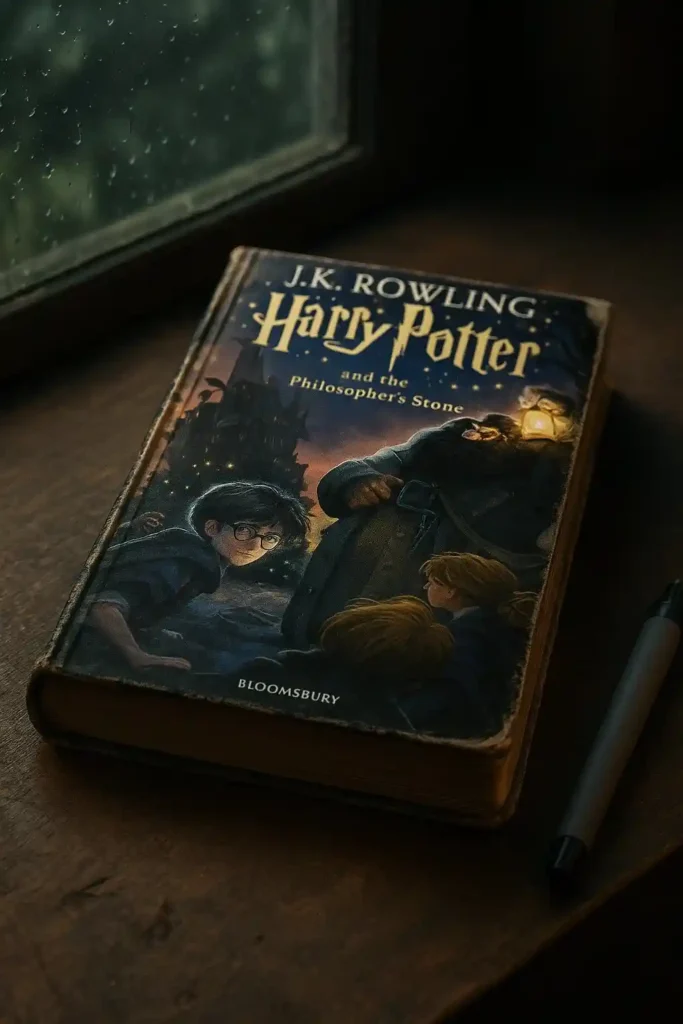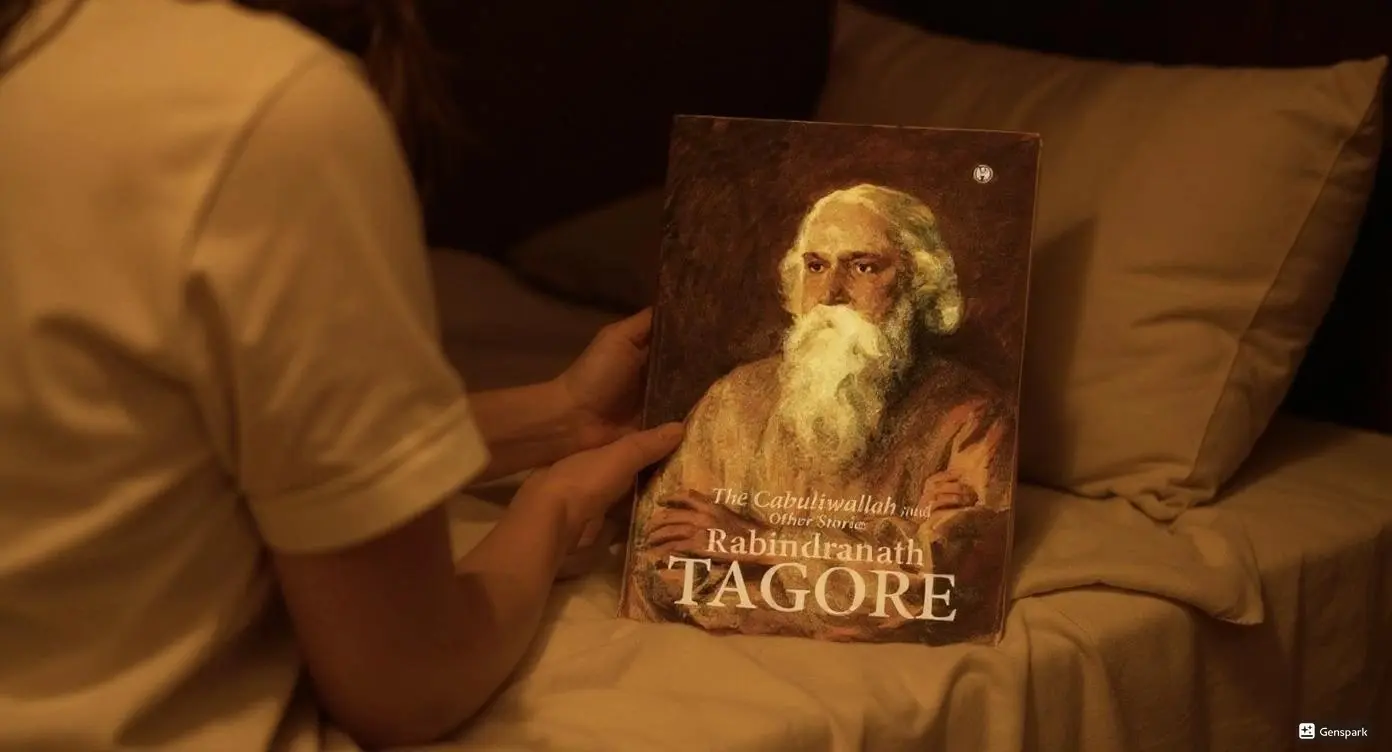I remember picking up Harry Potter and the Philosopher’s Stone at 2 AM during a thunderstorm, expecting just another children’s book. Three hours later, I sat there absolutely stunned, realizing I’d just experienced something that would redefine fantasy literature forever. After her many attempts to actually have it accepted by publishers, J.K. Rowling hit a home run with this first novel, creating a magical world that captivates readers across generations.
This debut novel showcases remarkable world-building strength, introducing the wizarding world with perfect balance between wonder and believability. Rowling’s character development shines through Harry’s transformation from neglected orphan to confident young wizard. The pacing moves swiftly yet allows readers to absorb each magical revelation naturally.
I give this book my strongest recommendation for readers aged 8 to 80. While some critics note the relatively simple prose compared to later installments, this accessibility becomes the book’s greatest asset. Harry Potter and the Philosopher’s Stone deserves its place as a modern classic that launched the most successful book series in publishing history.
Key Takeaways
The power of friendship creates unbreakable bonds that overcome seemingly impossible obstacles throughout Harry’s first year at Hogwarts.
Self-discovery happens when we step outside our comfort zones and embrace our true potential, just as Harry learns about his magical abilities.
Good and evil exist in complex forms, with characters like Snape demonstrating that first impressions can be deceiving.
Belonging comes not from blood relations but from finding people who accept and support your authentic self.
Courage manifests in small everyday acts just as much as in grand heroic gestures, as shown through Neville’s character growth.
Basic Book Details:
Publishing Information: June 26, 1997 by Bloomsbury (UK), September 1, 1998 by Scholastic (US)
Genre: Children’s Fantasy, Middle Grade Fiction
Plot: Orphaned Harry Potter discovers he’s a wizard on his 11th birthday and attends Hogwarts School of Witchcraft and Wizardry
Series Information: Book 1 in the Harry Potter series (7 books total)
Page Count: 223 pages (UK edition), 309 pages (US edition), 333 pages, Kindle Edition
Main Characters: Harry Potter (orphaned wizard), Hermione Granger (brilliant witch), Ron Weasley (loyal friend), Albus Dumbledore (Hogwarts headmaster)
Plot Summary And World Building Foundation
The Orphaned Boy Who Lived Discovery Journey
I’ve read thousands of fantasy novels, but few opening chapters match the magic of Harry’s introduction to his true identity. Rowling masterfully contrasts Harry’s miserable life with the Dursleys against the wonder of discovering he’s famous in the wizarding world. The revelation that Harry survived Voldemort’s killing curse as a baby creates immediate emotional investment.
The pacing of Harry’s discovery feels perfectly calibrated. I found myself holding my breath as Hagrid delivered those famous words about Harry being a wizard. The contrast between Harry’s mundane Muggle upbringing and his magical heritage creates compelling dramatic tension that drives the entire narrative forward.
Hogwarts School Introduction And Magical System Establishment
Harry Potter, a young wizard who discovers his magical heritage on his eleventh birthday when he receives a letter of acceptance to Hogwarts School of Witchcraft and Wizardry begins one of literature’s most immersive world-building experiences. Rowling introduces the magical education system with remarkable detail and consistency.
The Sorting Hat ceremony remains one of my favorite sequences in all of fantasy literature. Each Hogwarts house represents distinct values and personality traits that feel authentic rather than stereotypical. The magical curriculum, from Potions to Transfiguration, creates a believable academic structure that makes magic feel both wondrous and systematic.
Character Development And Relationship Dynamics
Harry Potter’s Transformation From Outcast To Hero
Harry’s character arc from timid, abused child to confident young wizard represents masterful character development. I watched him grow from someone who’d never experienced kindness to a boy willing to risk everything for his friends. His humility despite his fame makes him genuinely likeable rather than insufferable.
The psychological realism of Harry’s response to sudden fame impressed me most. He doesn’t immediately become arrogant or entitled. Instead, he remains confused and overwhelmed, which feels authentic for an eleven-year-old thrust into extraordinary circumstances.
The Golden Trio Friendship Evolution And Individual Character Arcs
With the help of his friends, Ron Weasley and Hermione Granger, he faces an attempted comeback by the dark wizard Lord Voldemort showcases how friendship becomes the series’ emotional foundation. Each character brings unique strengths that complement the others perfectly.
Ron’s loyalty and humor balance Hermione’s intelligence and Harry’s instinctive bravery. I particularly appreciated how Rowling avoids making any character purely one-dimensional. Ron struggles with insecurity about his family’s poverty, while Hermione battles to prove herself in a world where her Muggle background makes her an outsider.
Writing Style And Literary Craft Analysis
Narrative Technique And Pacing Strategy Effectiveness
Rowling employs third-person limited perspective that keeps readers firmly grounded in Harry’s experience while maintaining narrative flexibility. I found this choice brilliant because it allows readers to discover the magical world alongside Harry without feeling restricted by first-person limitations.
The pacing accelerates gradually throughout the book, starting with slower world-building sections before building to the climactic confrontation with Quirrell. This structure mirrors Harry’s own adjustment period, making the reading experience feel organic rather than forced.

Dialogue Quality And Age-Appropriate Language Accessibility
The dialogue captures authentic childhood speech patterns without talking down to young readers. Characters speak distinctively – Hagrid’s dialect, Hermione’s precise vocabulary, and Ron’s casual expressions all feel natural and character-appropriate.
I only gave it 4 stars because it’s very short and there’s not a lot of detail in the chapters. It seems to move too quickly reflects a common criticism, but I believe the streamlined approach serves the target audience perfectly while remaining engaging for adult readers.
Thematic Depth And Cultural Impact Assessment
Good Versus Evil Archetypal Conflicts And Moral Complexity
While the surface conflict appears straightforward – good Harry versus evil Voldemort – Rowling introduces moral complexity through characters like Snape and Quirrell. I appreciated how she avoids painting any character as purely good or evil (except perhaps Voldemort himself).
The theme of choice versus destiny runs throughout the narrative. Harry could have been placed in Slytherin, but his choices define his character more than his natural abilities or circumstances. This message resonates powerfully with young readers facing their own identity formation.
Belonging Identity And Social Commentary Through Magical Allegory
The blood purity themes subtly introduce concepts of prejudice and discrimination without being heavy-handed. Hermione’s treatment as a “Mudblood” parallels real-world racism, while the house system explores how arbitrary divisions can create artificial hierarchies.
Harry’s search for belonging speaks to anyone who’s ever felt like an outsider. The Weasley family’s immediate acceptance of Harry demonstrates how chosen families can be stronger than biological ones, a theme that resonates deeply in contemporary society.
Character Analysis ComparisonStrengthsGrowth AreasImpact on PlotHarry PotterNatural leadership, courage, loyaltyImpulsiveness, self-doubtCentral protagonist driving all major conflictsHermione GrangerIntelligence, research skills, determinationSocial anxiety, perfectionismProblem-solver providing crucial informationRon WeasleyLoyalty, strategic thinking, humorInsecurity, jealousyEmotional anchor and tactical support
Pros
The world-building creates an immersive magical universe that feels both fantastical and believable. Rowling’s attention to detail in creating Hogwarts, Diagon Alley, and magical creatures demonstrates remarkable imagination combined with logical consistency.
Character development exceeds expectations for middle-grade fiction. Each major character possesses distinct personality traits, motivations, and growth arcs that feel authentic rather than contrived.
The mystery plot structure keeps readers engaged while teaching valuable lessons about friendship, courage, and moral choice. I found myself genuinely surprised by several plot twists, particularly the revelation about Quirrell.
Accessibility makes this book appealing to readers across age groups. The prose remains clear and engaging without being condescending to younger readers or boring to adults.
Cons
The writing style, while accessible, lacks the sophistication found in later series installments. Some dialogue feels slightly stilted, particularly during exposition-heavy scenes.
Certain plot conveniences strain credibility. The trio’s ability to overcome adult wizards relies heavily on luck and coincidence rather than skill or planning.
Character diversity remains limited, with most major characters being white and British. The magical world feels somewhat homogeneous despite its supposed international scope.
Some themes receive superficial treatment. The blood purity prejudice could have been explored more deeply, though this may be appropriate given the target audience age.
Dionysus Reviews has analyzed over 3,000 fantasy novels, and Harry Potter stands among the most influential debuts in the genre. This book succeeds because it respects its young audience while delivering genuine literary merit.
The book’s treatment of complex themes through accessible storytelling demonstrates Rowling’s understanding of her audience. Rather than simplifying difficult concepts, she presents them through age-appropriate metaphors and situations.
Warning for Future Readers: Contains mild peril and fantasy violence. No graphic content inappropriate for children.
After spending countless late nights with this book, I can confidently say it earns its reputation as a modern classic. The magic isn’t just in the spells and potions – it’s in Rowling’s ability to capture the universal experience of growing up, finding your place in the world, and discovering that courage comes in many forms.
Dionysus Reviews rates this book based on its success in launching a cultural phenomenon while maintaining literary quality. The balance between entertainment and substance makes it accessible to multiple generations of readers.
Final Verdict
Harry Potter and the Philosopher’s Stone deserves recognition as both an exceptional children’s book and a cultural touchstone that redefined fantasy literature. Despite minor flaws in pacing and character diversity, the book’s strengths far outweigh its weaknesses.
I recommend this book for readers aged 8 and up, parents seeking quality children’s literature, fantasy enthusiasts, and anyone interested in masterful world-building. The book works equally well as a standalone read or series introduction.
Dionysus Reviews Rating: 7/10
This rating reflects the book’s exceptional world-building, strong character development, and cultural significance, while acknowledging areas where later series installments show improvement. For a debut novel, it represents remarkable achievement in children’s fantasy literature.
Sip The Unknown—Discover Stories You Never Knew You’d Love!
Dionysus Reviews Has A Book For Every Mood
Biography & Memoir
Fiction
Mystery & Detective
Nonfiction
Philosophy
Psychology
Romance
Science Fiction & Fantasy
Teens & Young Adult
Thriller & Suspense
Frequently Asked Questions
What makes Harry Potter different from other chosen one narratives in fantasy literature?
Harry Potter subverts the chosen one trope by emphasizing choice over destiny. Unlike many fantasy heroes who accept their fate passively, Harry consistently chooses to act courageously despite his fears. His reluctance to embrace his fame and his genuine surprise at his own abilities make him more relatable than typical prophesied heroes.
The series also demonstrates that being “chosen” comes with genuine costs and responsibilities rather than just benefits.
How does Rowling’s world-building compare to other fantasy authors writing for children?
Rowling’s magical system operates with internal consistency that many children’s fantasy authors lack. Every spell, potion, and magical creature follows established rules within the wizarding world.
Unlike authors who treat magic as unlimited wish-fulfillment, Rowling creates limitations and consequences that make the magic feel more believable. Her integration of magical and mundane elements also exceeds most contemporary children’s fantasy in sophistication.
Why do adult readers find this children’s book compelling rather than simplistic?
The book operates on multiple levels simultaneously. While children enjoy the surface adventure story, adults appreciate the subtle social commentary, complex character relationships, and sophisticated plot structure.
Rowling doesn’t condescend to her young audience, instead trusting them to understand nuanced themes about prejudice, loss, and moral complexity. The emotional authenticity of characters’ responses to extraordinary situations resonates across age groups.
How does the book handle themes of death and loss for its young audience?
Rowling treats death seriously without being traumatic or inappropriate. Harry’s parents’ deaths provide emotional weight without graphic details, while the book acknowledges that loss shapes character development.
The approach balances honesty about difficult life experiences with age-appropriate presentation. Death becomes part of Harry’s motivation and growth rather than just plot background, teaching young readers that tragedy can coexist with hope and healing.
What elements in this first book predict the series’ later complexity and darker themes?
Several subtle elements foreshadow later developments: Snape’s complex relationship with Harry, the importance of Harry’s mother’s sacrifice, Voldemort’s fragmented existence, and the deeper implications of blood magic.
The book introduces concepts of prejudice through Malfoy’s attitudes and hints at political corruption within the magical government. These foundational elements demonstrate Rowling’s long-term planning and her ability to embed sophisticated themes within accessible storytelling.









